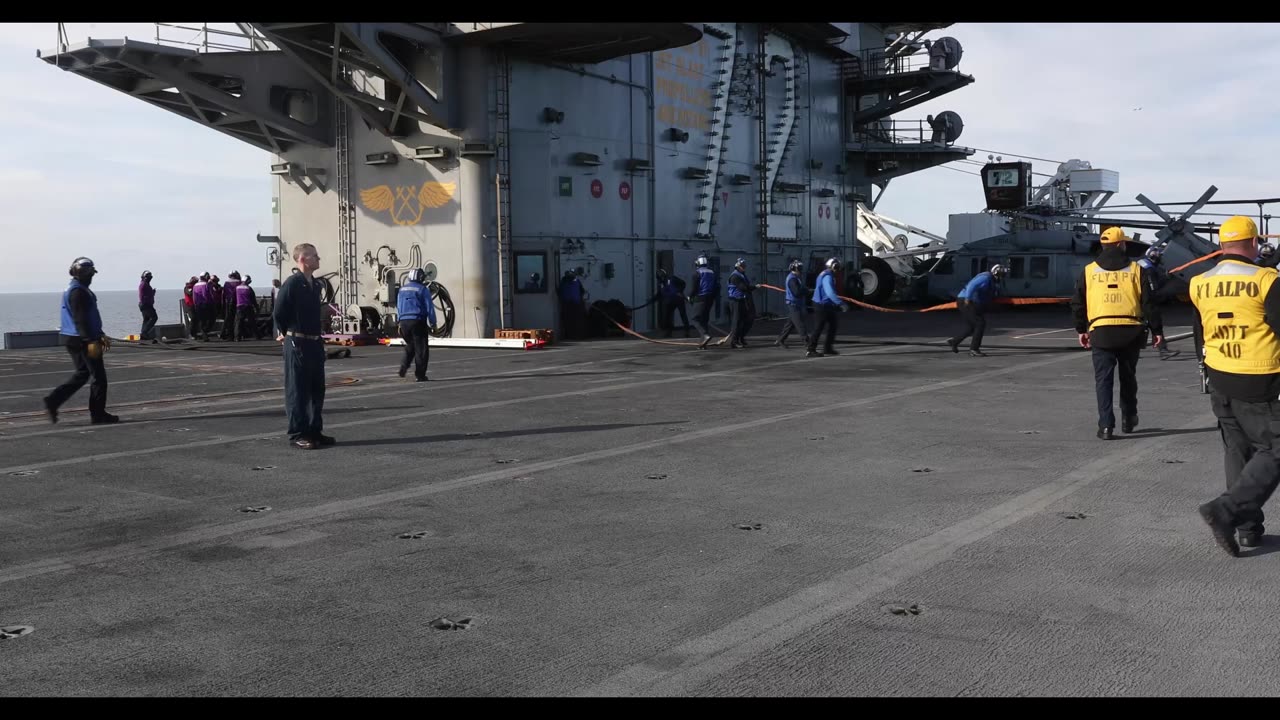Premium Only Content

The 11 Carrier Question: US Naval Strategy & Global Power Projection
The US aircraft carrier, a symbol of unrivaled naval strength, begs the question: is the current fleet of eleven vessels truly necessary? This video dissects the strategic, economic, and historical factors that underpin this specific number. We'll explore the critical role these carriers play in projecting US power globally, examining the current fleet's composition, including the Nimitz-class and the advanced Gerald R. Ford-class, and their operational significance.
We'll analyze the legislative mandate that established the eleven-carrier requirement, tracing its roots to strategic concerns and pivotal historical events. We'll examine the US Navy's strategic doctrines, highlighting the carrier's importance in sea control and power projection, as articulated in official documents. This will include considerations of how current global events are changing the Navy's strategic thought.
The operational demands placed on these vessels, including maintenance cycles and global deployment requirements, directly impact the necessary fleet size. We'll explore the ongoing debate among defense experts regarding the adequacy of eleven carriers, considering alternative naval strategies and the evolving nature of maritime warfare. We will also examine the new technology being placed on the Ford class carriers and how that changes the US Naval capabilities.
Finally, we'll trace the historical evolution of the US aircraft carrier fleet, highlighting the factors that have shaped its current form. We will consider the large cost of these ships, and how the rising threat of long range anti-ship weapons effect the long term viability of the carrier. This video provides a comprehensive overview of the strategic, operational, and historical considerations that determine the United States' aircraft carrier requirements.
-
 24:53
24:53
GritsGG
13 hours agoInsane 3998 Warzone Wins! Rank 1 Player Keeps 36 Win Streak!
5.22K -
 LIVE
LIVE
Lofi Girl
3 years agolofi hip hop radio 📚 - beats to relax/study to
173 watching -
 55:46
55:46
PandaSub2000
12 hours agoBeyond Good & Evil | ULTRA BEST AT GAMES (HD Edited Replay)
20.8K2 -
 3:11:36
3:11:36
FreshandFit
11 hours agoAlex Stein & Madison Cawthorn With Miami Latinas
203K66 -
 2:00:32
2:00:32
Badlands Media
14 hours agoOnlyLands Ep. 31: The Post-GART Hangover Show
77.2K37 -
 6:28:51
6:28:51
The Rabble Wrangler
13 hours agoBattlefield "Deputy Games" with The Best in the West!
40.3K -
 2:03:43
2:03:43
TimcastIRL
12 hours agoTrump Declares Antifa FOREIGN Terrorists, It Has Begun | Timcast IRL
239K134 -
 2:56:34
2:56:34
Parallel 8 Media
6 hours agoFriday Night Huddle - Ep 31- Julie Donuts, Rachel & Betsy
33.1K2 -
 5:03:56
5:03:56
Illyes Jr Gaming
17 hours agoCall Of Duty Black Ops 7 LAUNCH DAY!!!!
20.5K -
 4:21:52
4:21:52
Drew Hernandez
1 day agoTUCKER CLASHES W/ FBI, TRUMP PUSHES EPSTEIN DISCLOSURE AFTER HOAX CLAIM & IS MEGYN KELLY IN DANGER?
48K29